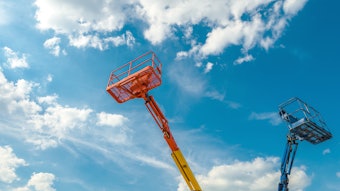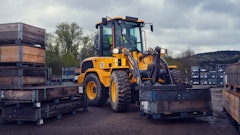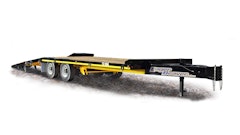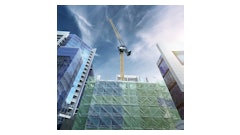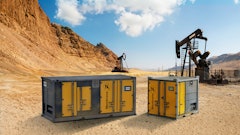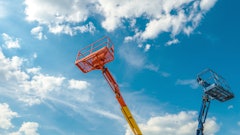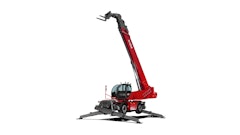All equipment rental businesses depend on the reliability of their equipment to guarantee a profit and provide a steady stream of repeat customers. When your equipment has the reputation for always working, you can grow your market share without cutting your rental fees.
One way to ensure the reliability of your equipment is to purchase quality, rental-duty equipment in the first place. Once you have an inventory of quality equipment, you'll need to have a support staff that can keep it serviced and ready to rent.
In order to keep your fleet rental ready, you need a good supply of parts for it — on hand, of course — because you can't keep the customer waiting.
The first step is to decide what parts to keep. This will come with time and experience — there are some parts that wear out or disappear more often than others, after all. For example, it is unlikely that an entire pump will go bad on one of your pressure washers, but it is entirely common to have a customer lose one or more of the quick connect tips. While it is unlikely that you will want to have a pump on hand, you might stock an unloader, which is less expensive than a pump and more likely to cause trouble (especially when abused). Moreover, an unloader might be something you would stock one of, while the aforementioned tips would be stocked plentifully.
There are different situations for different equipment, of course, but at the minimum you'll need to stock filters for servicing the engines on your equipment, and of course, consumables like planer teeth, chipper blades and the like.
Once you have settled on what to have on hand, you need to decide how to store it. All the parts in the world do you no good if you cannot lay your hands on them when you need them.
You need to decide first how to stock the parts. There are three basic methods. One is to sort them by what they fit, say, all pressure washer parts together, for example. A second method is to stock parts in order, by part number, on a shelf or in a bin. A third option is to stock parts by size, in storage bins with a file to tell you where the parts are.
The first option makes some sense but can lead to trouble when you need a specific small part and it's somewhere in that section, but where? This method does offer the advantage of not needing to know a part number to find a part. If you need a part for a carpet cleaner, you simply look in that section.
The second method requires you to know a part number, and once you do, they are arranged in order, so it's easy to find.
The downside to both the above methods, and the beauty of the third option, is this: When parts are arranged by part number or by what they fit, it requires a lot more space than when they are arranged by size. Using a parts bin — an industrial chest of drawers, as it were — you can store more parts in a lot less space. There are several manufacturers of parts bins and they can be special ordered in any configuration you like, with different drawer depths, cabinet sizes and drawer layouts. This is the method used by most parts suppliers in order to make the most efficient use of warehouse space. These bins also offer the option of bulk storage for large items, with cabinets that attach to the top or side of the bin.
The first step to laying out a parts system like this is to take inventory of all of the parts you will be stocking. While this information might be in your computer, it pays to write it down as well. Each inventory card should list a part number and contain all of the information needed, such as part number, what it fits, the selling price and how many of the item you have. This card is also where you will write down which bin the part is in, as well as noting that fact in your computer inventory.
Once you have inventory and parts in hand, devote a large counter to the next step: dividing them by size. Parts of the same rough size should be grouped together. Bearings, for example, bolts and so on. As the parts get larger in size, the bins they are assigned to get larger as well. You will need to arrange your bins accordingly once you separate your parts.
Parts bins can be separated with drawer dividers so you can make individual areas within each drawer for each part number. You'll need to number these in some way. For example, the first cabinet you set up would be cabinet 1. Then each individual bin in the drawers would be numbered as well, so that you would note the location of a part by which cabinet it was in, and what bin number. For example, part number 12345 is in cabinet 1, bin 14. The drawers on each cabinet can be labeled as to the bin numbers inside, making finding the parts that much easier.
Once you start storing the larger parts, you'll need bulk storage, and it will be numbered in a similar way. The key to making this system work is making sure everything is labeled. Use a high-quality labeler to label every cabinet, drawer and bin.
As you put each part away, be sure to write down the bin location on the card and make sure it is correct. With hundreds of parts in an average rental equipment repair shop, it is quite possible to lose a part if it is not stocked properly, which brings us to this point: Industrial parts bins are available with locks. Make sure yours have them and that only key people in your organization have keys to your parts bins. This prevents the well-meaning from randomly pawing through bins looking for parts, (and misplacing them in the process). Locks deter theft as well, of course.
Once your entire inventory is accounted for, the cards are filled out and everything is put away, make sure to transfer the bin location information to your computer system. If you have a computer terminal in the parts room that's great, just be sure to store the cards in a safe place. You never know when they will come in handy.
Now, when you need a part and you know the number, you will be able to go to the file, and the location is right there in front of you. Those of you who are a bit more adventurous might even cross reference your part numbers by manufacturer so that you can find what you need without a part number, giving you the best of all worlds, and more space in your parts room.
PD Peterson has worked several years in the rental industry as a parts and service technician. He is currently service manager at a John Deere dealership in Tennessee.

